Korean art includes a diverse range of art forms and styles that has its roots in stone age works dating back to 3000 BC. It is characterised by the use of bold colours, natural forms and surface decorations and the main mediums of expression include pottery, sculpture, painting and calligraphy. Many Korean artists have modified Chinese or Japanese traditions to create their own unique art style at the same time as transmitting historical aspects of both cultures.
Characteristics of Korean Art
The beauty and strength of Korean art lies in its sheer simplicity, spontaneity and its harmonious relationship with nature and natural forms. In this way, it is a lovely art from to engage with as it is not concerned with technical proficiency or perfection, instead the idea is to work closely with nature and bring out its natural and inherent characteristics in a simple and unadorned fashion. This creates lots of scope for creativity and subjective interpretation.
Early Korean painting
The objects of traditional Korean painting include Geisha’s, beautiful landscapes and animals and flowers. The paintings are generally simple yet are brought to life with some fine and intricate detail in parts as well as a range of bold and eye-catching colours. The history of Korean painting dates back to fourth century murals painted on tomb walls . Many of the early Korean painters travelled to China to study modern Chinese painting styles, which would eventually influence Japanese art as many Korean artists eventually migrated to Japan.
How to paint Korean style
In the past, Korean painting consisted primarily of chiese ink and dye on sheets of silk paper. It is also possible to create authentic looking Korean paintings using watercolour. Watercolour is a beautiful and natural looking medium that is particularly good to use for landscape paintings as well as bring different figures and portraits to life.
Watercolour can also be used to give an impressionistic feel to paintings which can work particularly well with landscapes and natural scenes. If you are new to painting, then watercolour is a great way in as you can get impressive results with little experience. However, it does help to have some knowledge and skills in drawing first which will increase the quality of the watercolour paintings that you produce.
Korean Calligraphy
Another good starting point for getting into Korean art is calligraphy. It requires few materials and it can be really satisfying and therapeutic. Traditional Korean calligraphy is created with a soft and flexible brush, dipped in black ink and drawn on white paper. The modern take on this are brush pens which are made of plastic with an ink reservoir and felt tip, these are easier to get hold of and to work with.
Investing in a range of brush pens with a different level of thickness and some good quality paper is enough to get you started. Control and steadiness, which is essential to good calligraphy is something that you will gain over time through practice. There are many online tutorials or guidebooks that you could use to help you while you are staring out.
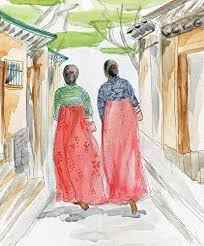 Art
ArtMEAT AND FISH ARE key to many of South Korea’s most popular dishes — especially in the bustling food markets and street stalls. Meat is part of everyday life in a country where it’s estimated that only around 1 percent of the population is vegetarian. Yet vegetarians shouldn’t feel left out. South Korea has one of the healthiest cuisines, in part thanks to all the plant-based options to choose from.
The first principal to sticking to a vegetarian diet in Korea is to always clarify what you do and don’t eat. After all, even most kimchi is made with fish sauce. Stick to these eight dishes, though, and you should be in the clear and more than satisfied.
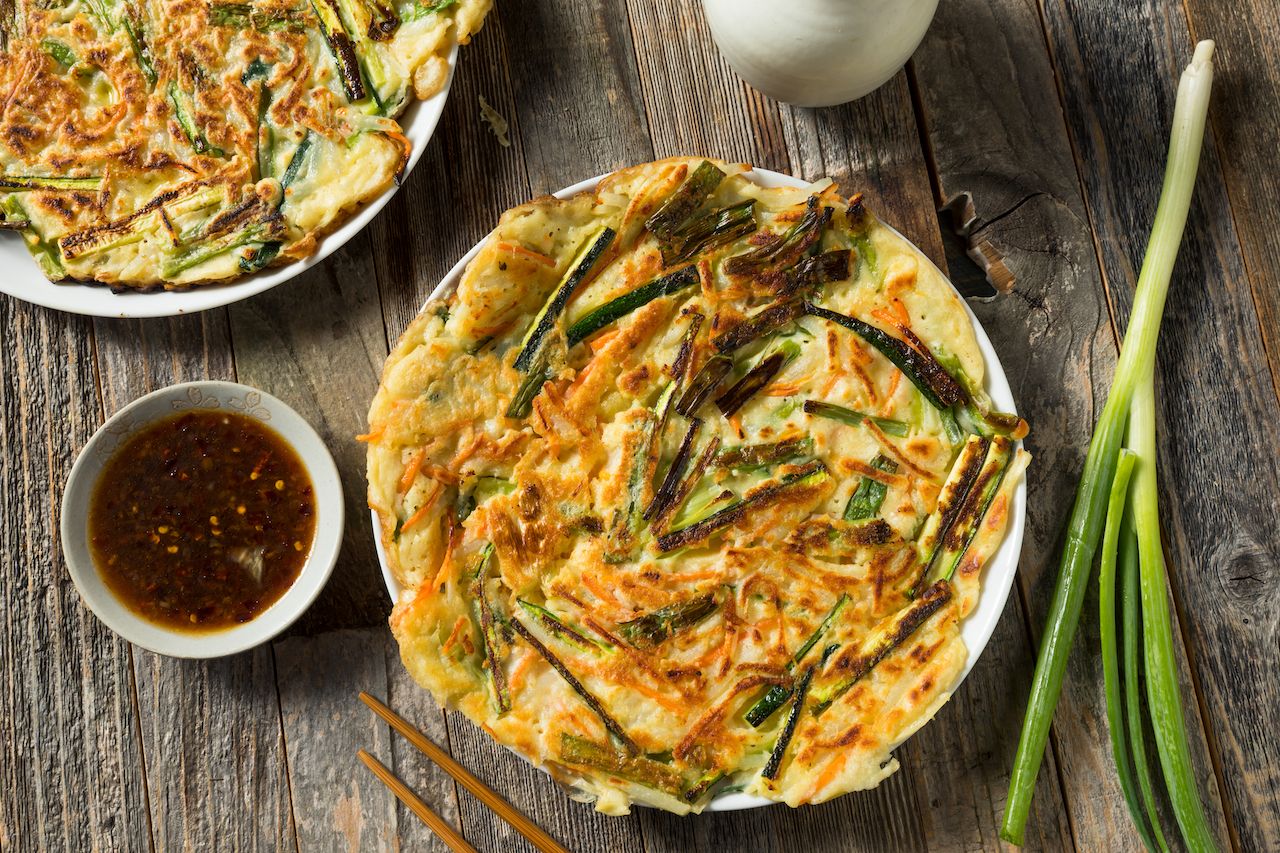
Photo: Brent Hofacker/Shutterstock
Traditional Korean pancakes are a savory snack. In Korean, jeon means pancake and pa means scallion. Pajeon are flat, salty pancakes made from a batter of eggs and flour that have a nice crunch from scallions and veggies like peppers. Other common ingredients include garlic and cabbage, though there are also pajeon with meat or seafood, so double check your order. Pajeon are served cut into pieces with a soy dipping sauce.
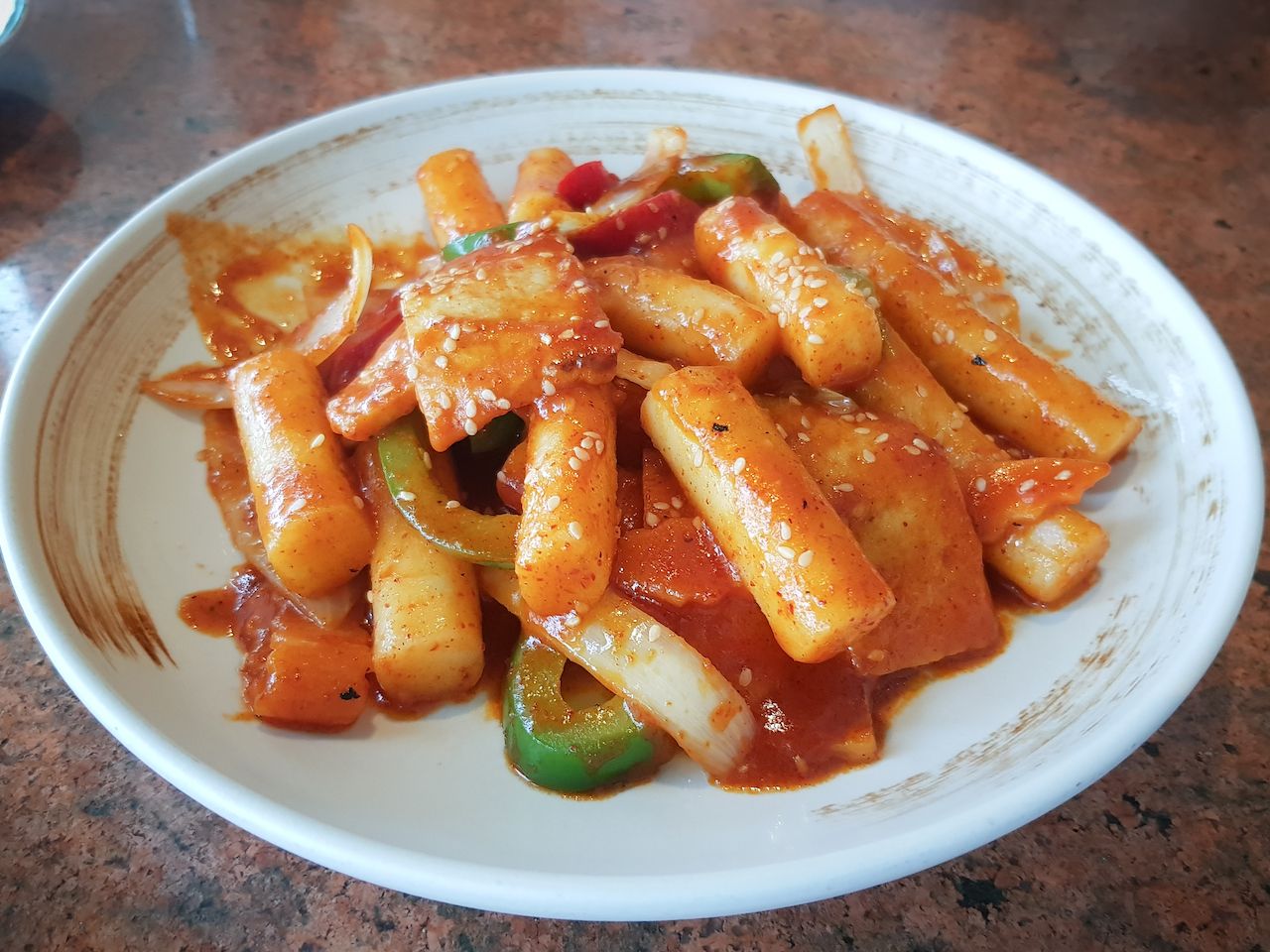
Photo: KKanniCh/Shutterstock
Gireum tteokbokki is a dish made with chewy, finger-sized rice cake links that are stir-fried with chili oil. It’s basically the vegan version of typical tteokbokki, which is cooked in a spicy bright red gochujang (chili paste sauce) that typically uses anchovies. This dish is sometimes served with fish cakes, so be sure to request it without. Gireum tteokbokki can be found at traditional markets and food stalls.
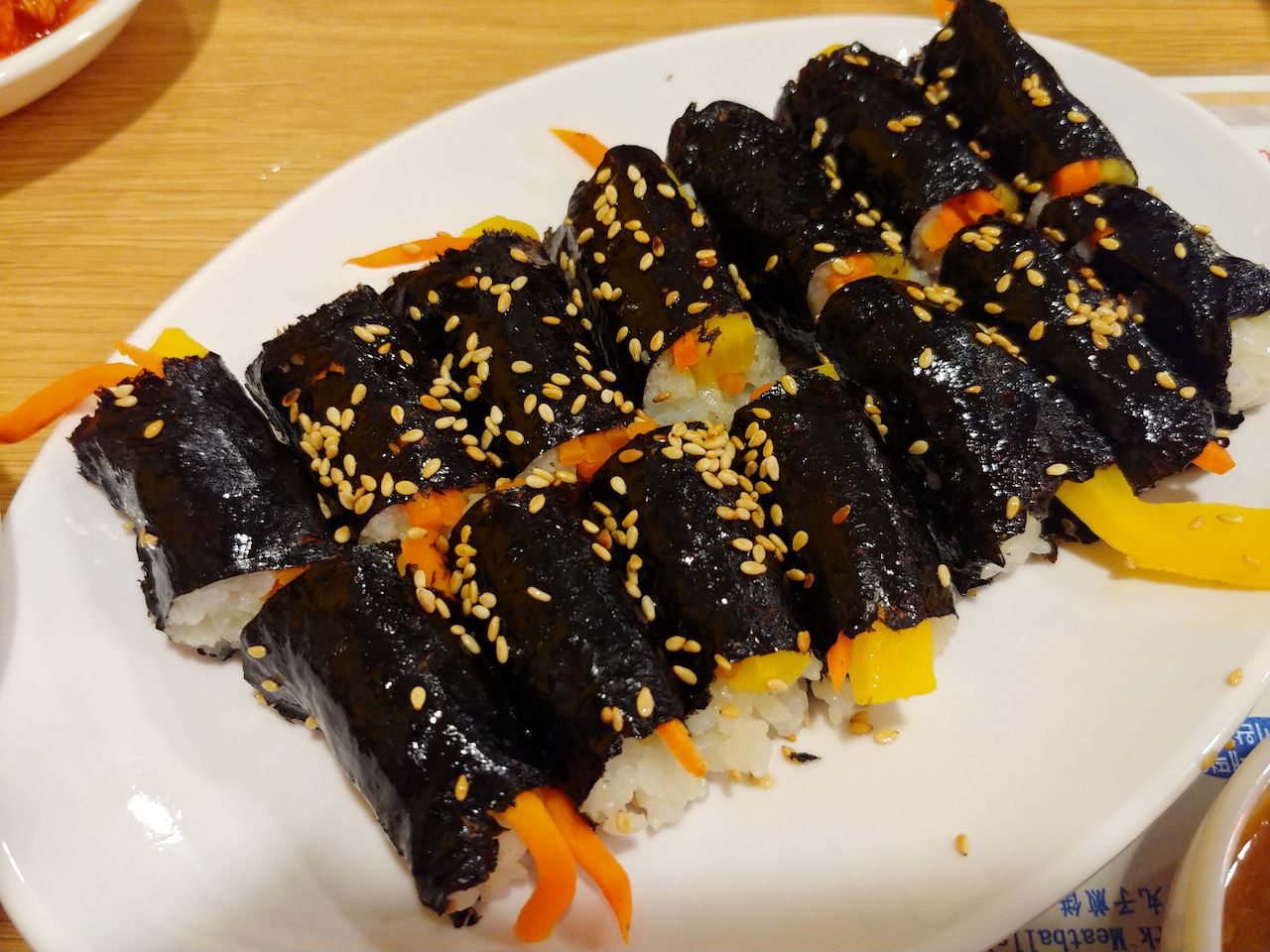
Photo: Darong/Shutterstock
Gimbap is made with gim, which in Korean translates to dried sheets of seaweed (the spelling is also sometimes Anglicized as kim and kimbap). The seaweed is lined with rice and filled with vegetables before being rolled and cut into small pieces that visually resemble sushi. The main ingredients include egg, pickled radish, spinach, carrot, and burdock root. Some rolls may include imitation crab meat, ham, or tuna, but you can easily order this food vegetarian.
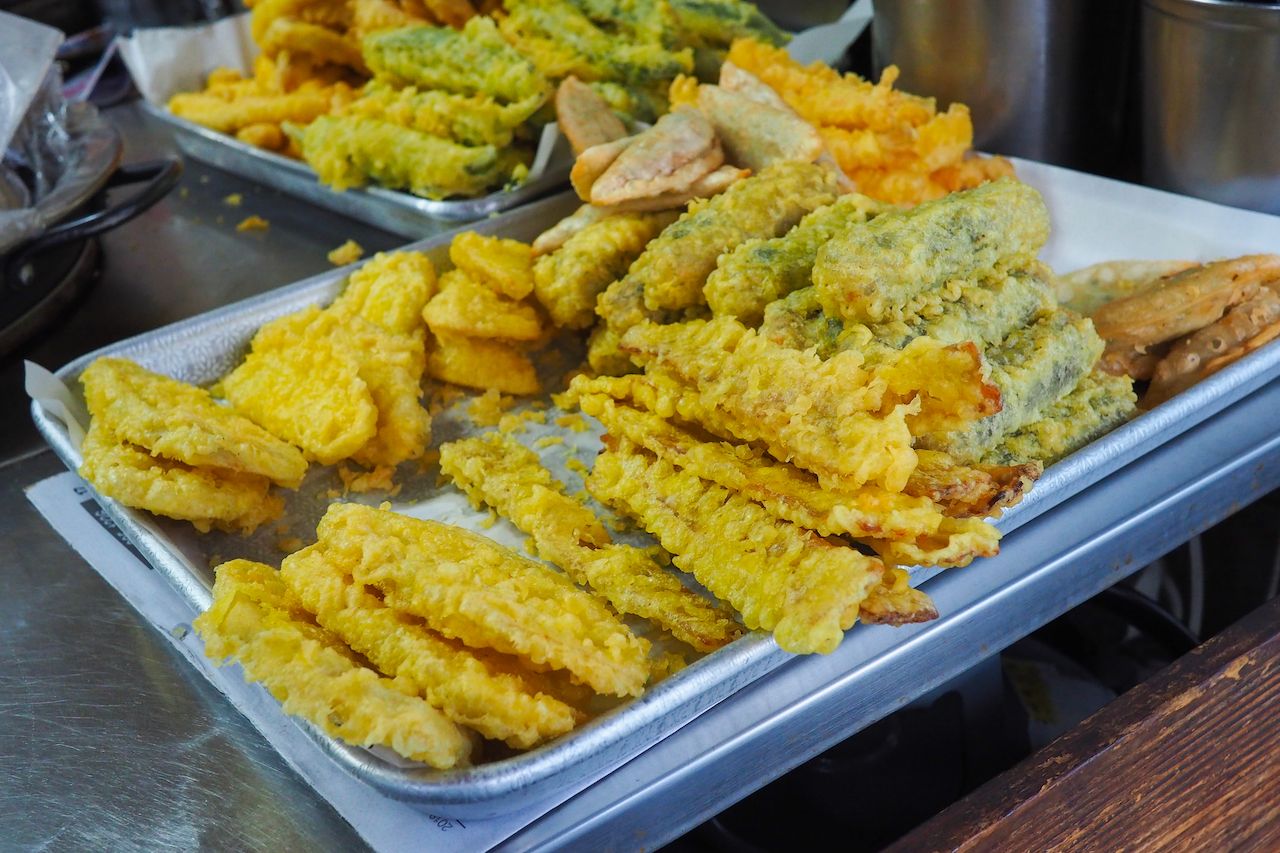
Photo: NavyBank/Shutterstock
In Korean, yache means vegetable and twigim means fried food. This is basically the Korean version of vegetable tempura. This snack is salty, savory, and greasy — everything street food should be. The variety of deep-fried vegetables includes sweet potatoes, carrots, onions, and peppers.
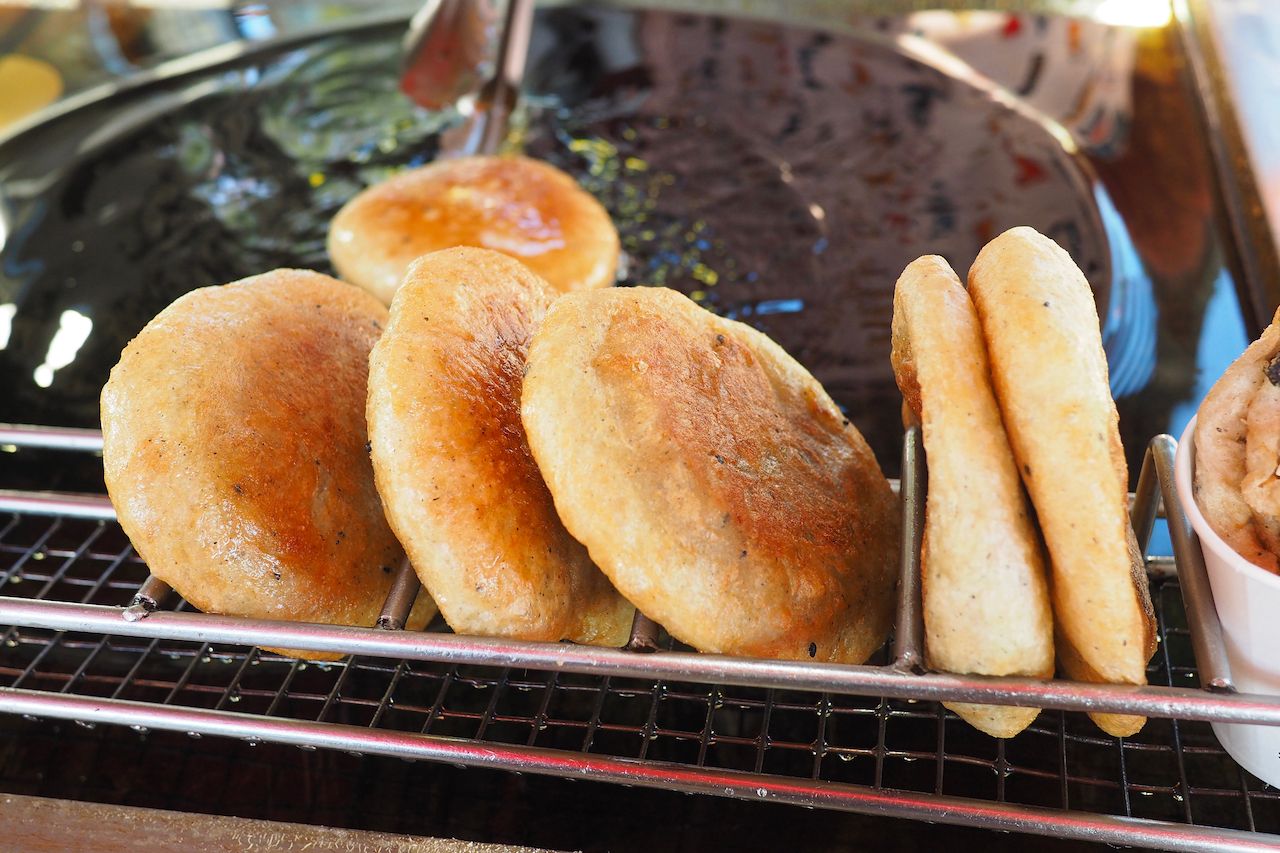
Photo: NavyBank/Shutterstock
You can smell the sweet nutty aroma of these Korean stuffed doughnuts luring you in from a street away. These tennis-sized dough balls are filled with a mixture of brown sugar, honey, nuts, and cinnamon. Fried on a hot oiled surface, they are then flattened with a round spatula on each side until the outside is a light crispy brown. Be careful with your first bite, as the inside is hot enough to burn your tongue.
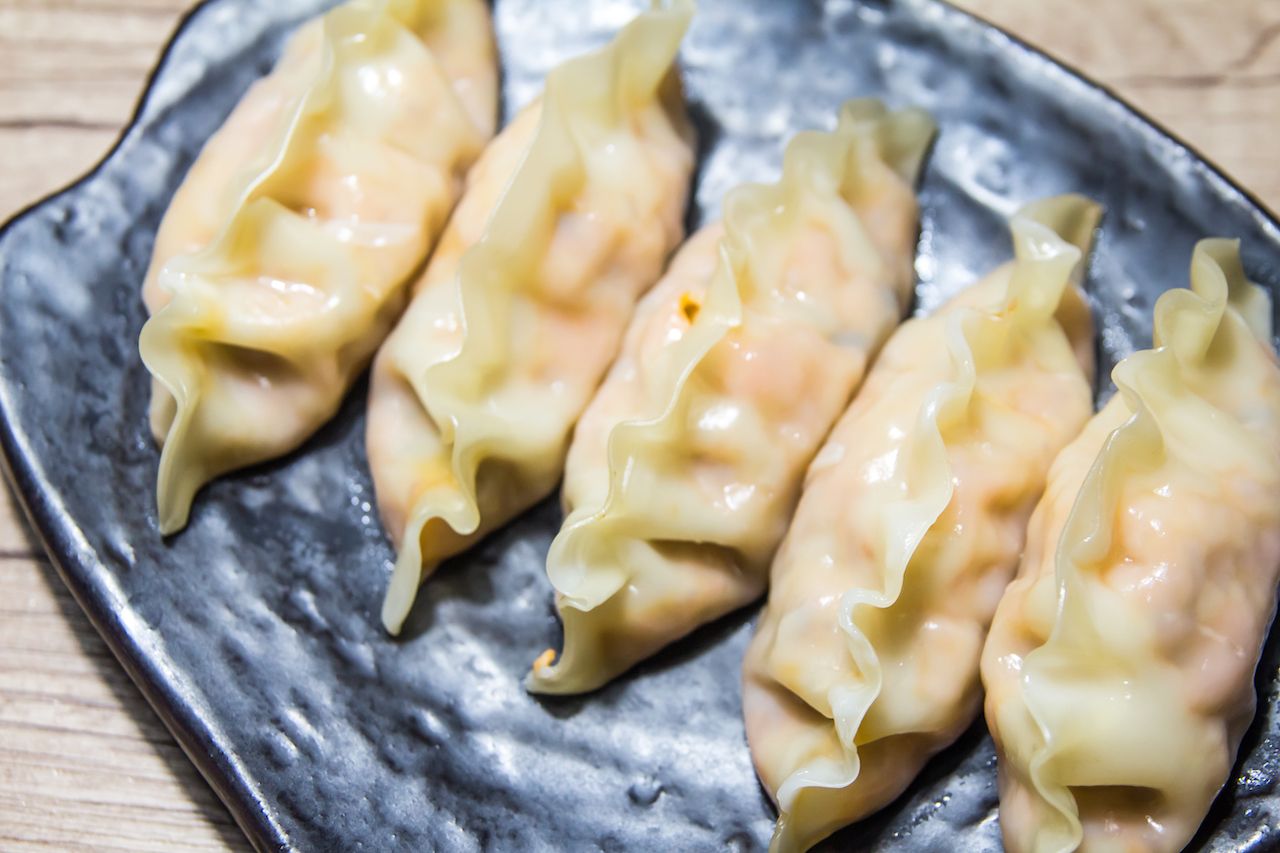
Photo: becky’s/Shutterstock
Mandu means dumpling in Korean, and most mandu options in Korea are filled with beef or pork. Veggie-filled steamed dumplings are hard to find, but there are napjak mandu in the city of Daegu. These are flat, pan-fried dumplings filled with Chinese glass noodles and scallions.
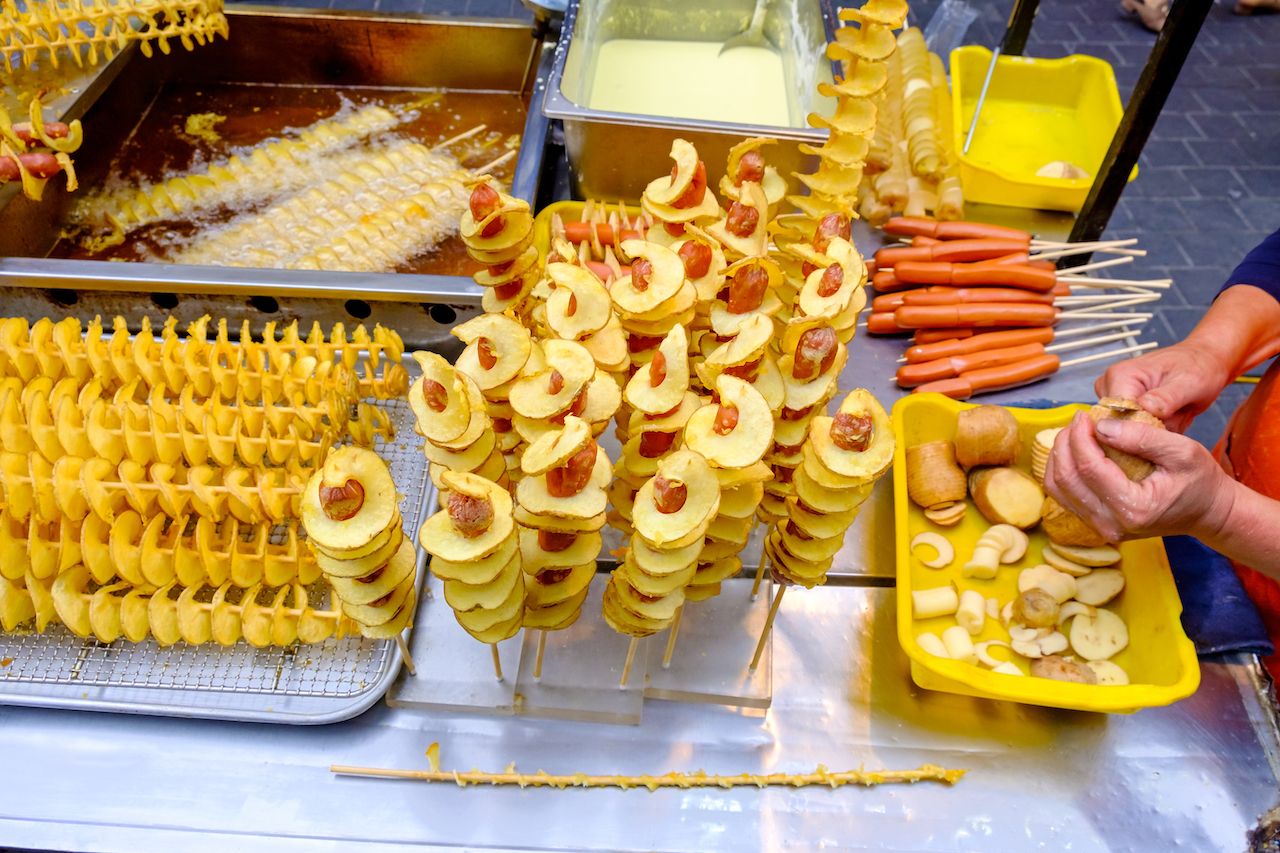
Photo: Daniel Fung/Shutterstock
This popular Korean street food is a deep-fried, spiral-cut twisted potato on a stick. Because everything tastes better on a stick, right? This potato snack is usually covered with a cheese powder or honey and is the perfect bite to enjoy as you stroll through a market — just make sure you don’t get the one with a hot dog in the middle.
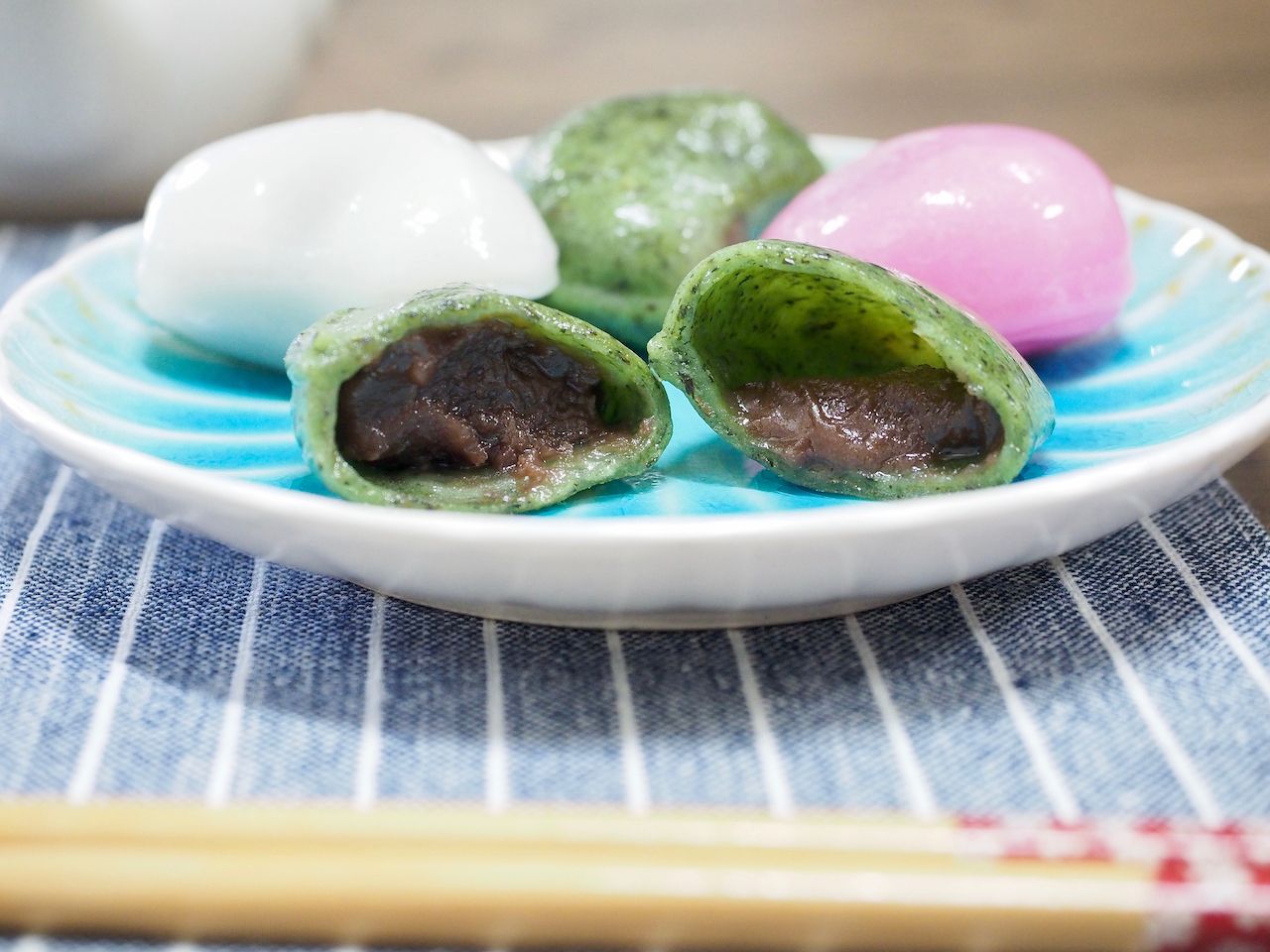
Photo: sungsu han/Shutterstock
Rice cakes are one of Korea’s favorite baked goods, and there are many varieties. Some rice cakes are made with crispy and sweet puffed rice, while others are soft and chewy with a red bean paste filling. These treats are often given as gifts during holidays and used to express feelings of appreciation to co-workers, friends, neighbors, and family.

